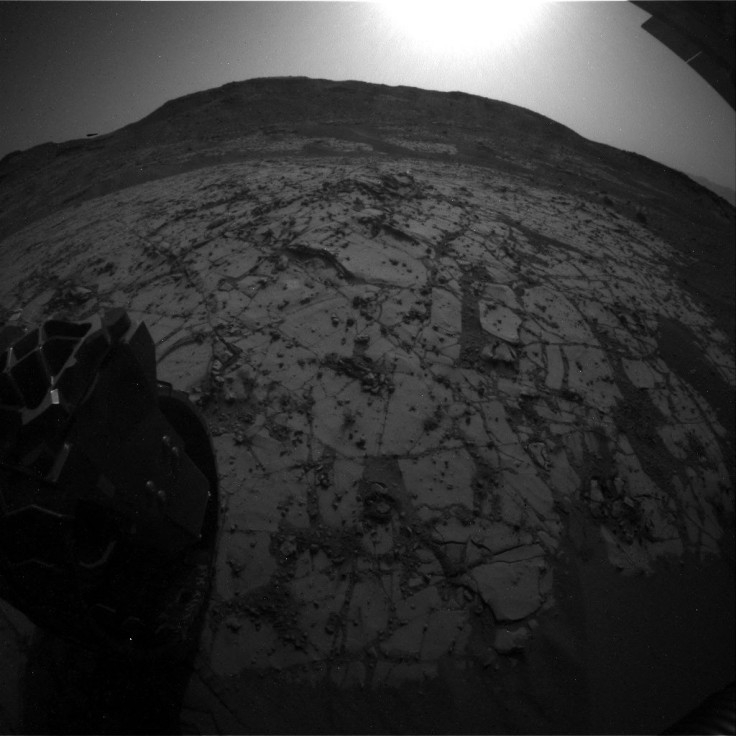NASA Photo Captures Moving Alien Vessel On Mars, UFO Expert Claims

A UFO expert claimed that some of the photos taken by NASA’s Curiosity rover showed a wedge-shaped alien vessel on Mars. Based on the photos, it seems the alleged vessel is still operational.
The photos taken by NASA’s rover on the Red Planet were discovered and shared on YouTube by the UFO channel Terry’s Theories. The channel’s owner, Terry, came across photos while browsing through the gallery of raw images taken by the Curiosity rover.
As he was going through the raw images taken on Mars, a couple of them caught his attention. According to the details of the photos, they were taken by the rover on Sol 862, which is equivalent to Jan. 8, 2015 on Earth. At first, the content of the photos looks like the typical images captured by Curiosity on Mars. They mainly featured the Red Planet’s rocky surface and nearby hills.
However, after closely inspecting one of the images, Terry noticed a strange object just above the hills featured in the photo. Interestingly, the mysterious object is not in a different photo that shows the exact same region. This clearly indicates that the object is not a natural part of the area.
In addition, after zooming in on the object, Terry noticed that it was hovering above the ground. As noted by Terry, the object had an elongated shape that resembles a wedge.
“It almost looks like a wedge,” he said in the video. “I don’t want to call it a saucer-shape because it’s just I don’t think that it is.”
Based on its appearance, the object could be an alien vessel that was flying just above the hills on Mars. This could explain why and how it disappeared in the other photo taken by the Curiosity rover. It is also possible that the rover accidentally photographed a soft piece of NASA’s equipment that was blowing in the wind.
Another possible explanation is that the object is nothing more but a speck of dust on the lens of the rover’s camera. It may have been blown away by the Martian wind when Curiosity took another photo of the same region.





















